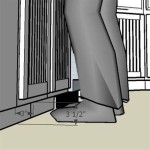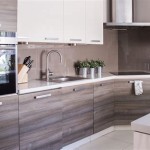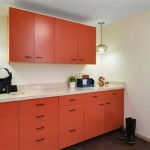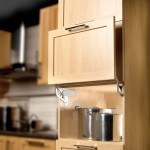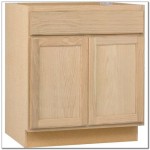What Colours Go With A Blue Kitchen?
The selection of colours to complement a blue kitchen is a crucial aspect of interior design, impacting the overall aesthetic and atmosphere of the space. Blue, known for its calming and versatile nature, presents a broad spectrum of shades, from deep navy to airy sky blue. Consequently, the ideal complementary colours must be carefully considered to ensure a harmonious and visually appealing environment. This article will explore various colour palettes that effectively work with blue kitchens, examining the nuances of each combination and highlighting their respective strengths.
Understanding the Nuances of Blue
Before exploring specific colour pairings, it's essential to understand the characteristics of blue as a colour. Blue is often associated with tranquility, serenity, and stability. However, its specific effect can vary depending on its saturation, hue, and undertones. Darker blues can evoke a sense of sophistication and formality, while lighter blues tend to create a more casual and airy feel. When selecting complementary colours, it is crucial to consider the specific shade of blue used in the kitchen to ensure a cohesive and balanced design.
The undertones of blue are also significant. Some blues may have cool undertones, leaning towards green or gray, while others may have warmer undertones, tending towards purple. These undertones will influence which colours harmonize best with the blue cabinetry, walls, or backsplash. Failing to acknowledge these subtle differences can result in a colour scheme that feels disjointed and unflattering.
Furthermore, the amount of natural light in the kitchen plays a vital role in how blue is perceived. In a dimly lit space, dark blues can make the room feel smaller and more enclosed. Conversely, in a brightly lit kitchen, darker blues can add depth and drama without overwhelming the space. Therefore, the lighting conditions should be taken into account when selecting the shade of blue and its complementary colours.
Classic and Timeless Pairings: White and Gray
One of the most reliable and versatile choices for complementing a blue kitchen is white. White provides a clean, crisp contrast to blue, creating a bright and airy atmosphere. This combination is particularly effective in smaller kitchens, as the white helps to visually expand the space. The specific shade of white can also be adjusted to suit the blue used. For example, a warm white can soften the coolness of a deep navy blue, while a cool white can enhance the crispness of a lighter sky blue.
White can be incorporated through various elements, such as countertops, backsplashes, walls, and trim. A white subway tile backsplash can add a classic touch to a blue kitchen, while white quartz countertops can provide a durable and low-maintenance surface. The key is to ensure that the white is used strategically to balance the blue and prevent the space from feeling too sterile or monotonous.
Gray is another neutral colour that harmonizes well with blue. Gray offers a more subtle and sophisticated contrast than white, creating a calming and refined atmosphere. Similar to white, gray comes in a variety of shades, from light silver to deep charcoal. Lighter grays can complement lighter blues, while darker grays can provide a striking contrast to lighter blues, adding depth and visual interest.
Gray can be incorporated through various elements, such as flooring, countertops, and walls. Gray tile flooring can add a touch of elegance to a blue kitchen, while gray granite countertops can provide a durable and stylish surface. When using gray, it's important to consider its undertones. A warm gray with beige undertones can soften the coolness of a blue kitchen, while a cool gray with blue undertones can enhance the coolness of the space.
Adding Warmth and Energy: Yellow and Orange
To introduce warmth and energy to a blue kitchen, consider incorporating yellow. Yellow is a complementary colour to blue on the colour wheel, meaning they sit directly opposite each other. This creates a vibrant and dynamic contrast that can be both visually stimulating and uplifting. However, it's important to use yellow sparingly, as too much can be overwhelming. A few well-placed yellow accents can add a pop of colour and prevent the kitchen from feeling too cold or sterile.
Yellow can be incorporated through accessories, such as dishware, artwork, and textiles. Yellow flowers can add a touch of natural beauty to a blue kitchen, while yellow curtains or blinds can provide a cheerful burst of colour. When using yellow, it's important to consider its shade. A bright, sunny yellow can be energizing, while a muted, golden yellow can be more soothing and sophisticated.
Orange is another warm colour that can complement a blue kitchen, although it requires careful consideration. Orange is a bold and vibrant colour that can add a sense of playfulness and energy to the space. However, it can also be overwhelming if used excessively. For a more subtle approach, consider using terracotta or burnt orange accents.
Orange can be incorporated through accessories, such as cookware, utensils, and textiles. Copper cookware can add a touch of warmth and sophistication to a blue kitchen, while orange throw pillows can provide a pop of colour and comfort. When using orange, it's important to balance it with neutral colours to prevent the space from feeling too chaotic.
Embracing Natural Elements: Wood Tones and Greens
Incorporating wood tones into a blue kitchen can add warmth, texture, and a sense of natural beauty. Wood provides a grounded and organic element that can balance the coolness of blue. The specific type of wood and its finish will influence the overall aesthetic of the space. Light woods, such as birch and maple, can create a bright and airy feel, while dark woods, such as walnut and mahogany, can add a touch of sophistication and drama.
Wood can be incorporated through various elements, such as flooring, cabinetry, and countertops. Wood flooring can add warmth and character to a blue kitchen, while wood countertops can provide a durable and natural surface. When using wood, it's important to consider its grain and texture. A wood with a pronounced grain can add visual interest, while a wood with a smooth surface can create a more streamlined look.
Green is another natural element that harmonizes well with blue. Green is a calming and refreshing colour that can evoke a sense of nature and tranquility. It also has the added benefit of being a colour that is next to blue on the colour wheel, creating an analogous colour scheme that is inherently harmonious. Green plants can add a pop of colour and bring life to a blue kitchen, while green accents, such as tiles or accessories, can provide a subtle complement.
Green can be incorporated through various elements, such as plants, backsplashes, and accessories. A herb garden in the kitchen window can add a touch of greenery and provide fresh ingredients for cooking, while green glass tiles can create a vibrant and eye-catching backsplash. When using green, it's important to consider its shade. A vibrant, emerald green can be energizing, while a muted, sage green can be more soothing and sophisticated.
Ultimately, the selection of colours to complement a blue kitchen depends on individual preferences and the desired aesthetic. By carefully considering the nuances of blue and the characteristics of various complementary colours, it is possible to create a kitchen that is both visually appealing and functionally sound. Experimentation and careful planning are key to achieving a harmonious and balanced colour scheme.

Blue Kitchen Ideas For Your Home Designcafe

Navy Blue Kitchen Ideas Kettle Co

30 Bold Blue Kitchens That Are At The Height Of Good Taste

Navy Blue Kitchen Ideas Kettle Co

30 Bold Blue Kitchens That Are At The Height Of Good Taste

Blue Kitchen Ideas For Your Home Designcafe

53 Blue Kitchens Kitchen Design Ideas

Best Kitchens In Classic Blue Try Out The Trendiest Color Many Tones Decoist

20 Modern Blue Kitchen Cabinet Ideas That Are Trendproof

30 Bold Blue Kitchens That Are At The Height Of Good Taste
Related Posts


